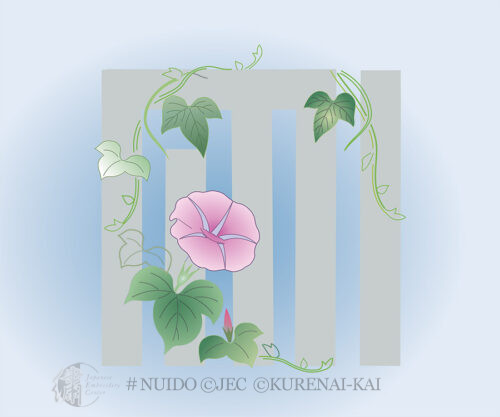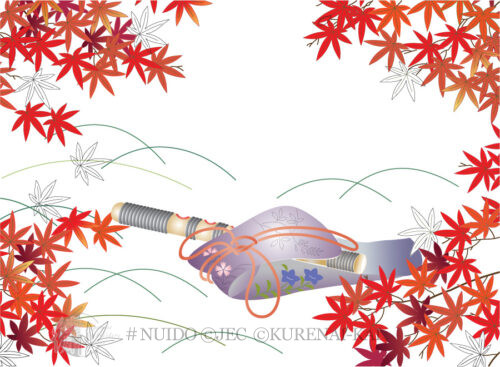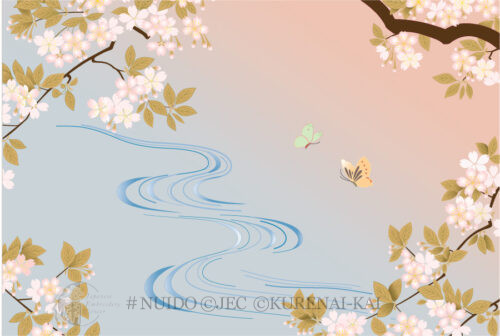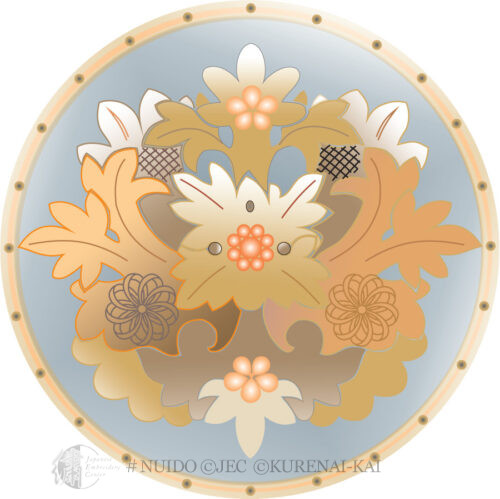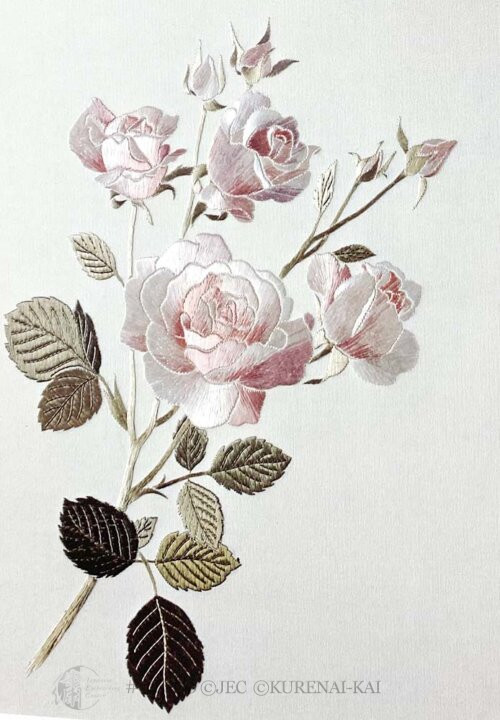 "Fabric name" (e.g. Uchikake- gold, Monmuji - white) means there will outline only "Fabric name - With color" means there will be colors inside of the motifs "Fabric name - Dyed" means there will be background dye. *You are required to select the Fabric color "Fabric name - Dyed - With color" means it will have both background dye and colors inside of the motifs. *You are required to select the Fabric colorPlease note that the color thread list is suggested and subject to change until the end of the classThe listed colors are for both the pink rose and the blue rose (inspired by the blue poppy). You can use a single set of colors or multiple sets. Or use the color of your choice
"Fabric name" (e.g. Uchikake- gold, Monmuji - white) means there will outline only "Fabric name - With color" means there will be colors inside of the motifs "Fabric name - Dyed" means there will be background dye. *You are required to select the Fabric color "Fabric name - Dyed - With color" means it will have both background dye and colors inside of the motifs. *You are required to select the Fabric colorPlease note that the color thread list is suggested and subject to change until the end of the classThe listed colors are for both the pink rose and the blue rose (inspired by the blue poppy). You can use a single set of colors or multiple sets. Or use the color of your choice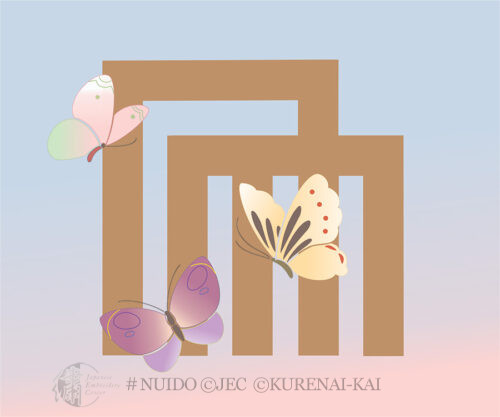
Spring design shows a Genji-mon with butterflies. The butterfly is considered to be a symbol of “the revival”
In Japan, it is used as the symbol of the incarnation of immortality, the immortality of a samurai.
This design is not so serious. It shows the return of spring and butterflies playing around the mon.
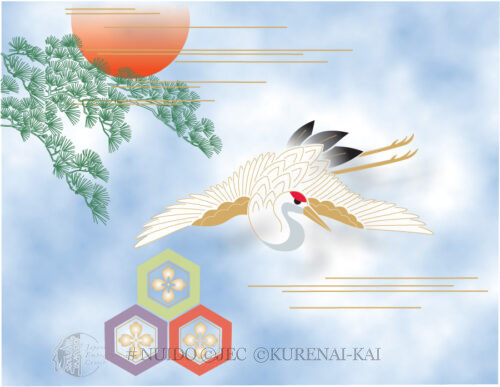
Pine, crane, and turtle (expressed as kikko, the hexagon pattern taken from turtle shells) are symbols of longevity in Japan. This is why these motifs can be often seen at celebrations such as weddings, or birthdays for elders. Examples of this can be seen on formal wedding kimonos, and the uchikake, the decorative kimono that is worn over the actual kimono, where beautiful images of those motifs are often embroidered.
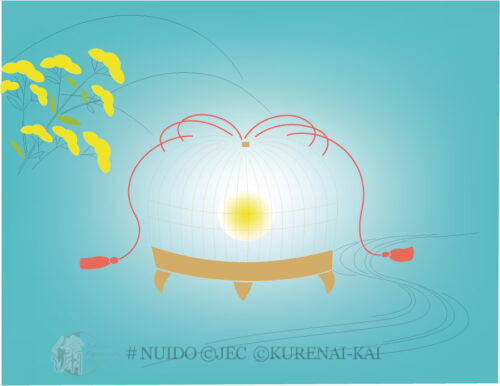
In Japan, there is a custom to “listen to insects. It makes us feel cool by listening to the insects singing while awaiting the arrival of the autumn season.
People continue to make traditional insect baskets using bamboo in traditional style. Children catching insects and storing them in a cage is a typical summer scene in Japan.
